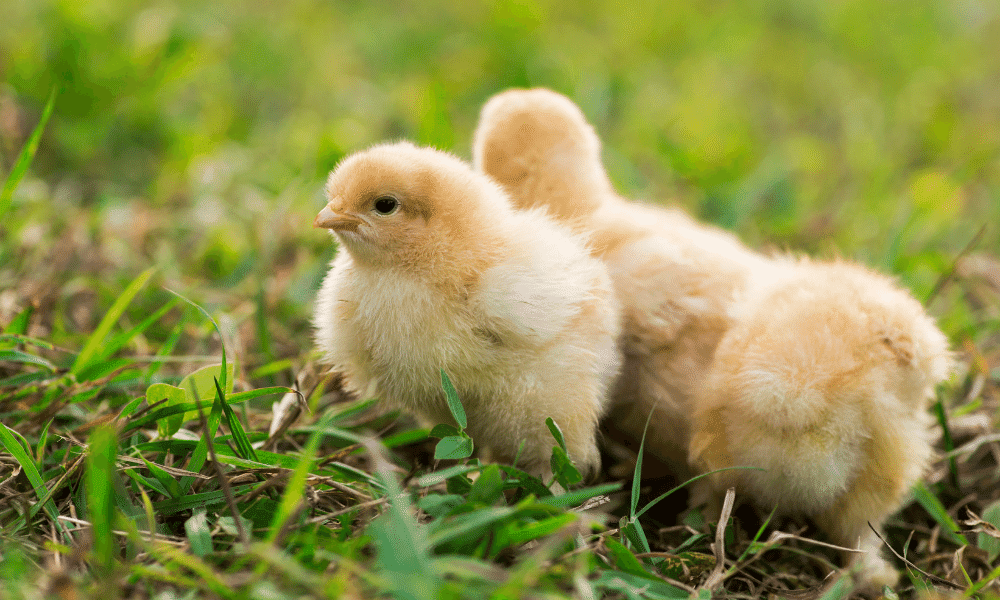Ultimate Guide to Raising Polish Chickens
Welcome to the enchanting world of Polish chickens! If you're thinking about raising these distinctive birds in your backyard, you're in for a treat. Also known as the Polish Crested Chicken for their distinctive feathered crests, these chickens are not only a joy to watch but also a quirky addition to any flock. In this guide, we'll cover everything you need to know to care for them, from selecting the right chicks to dealing with their particular care needs. Get ready to be charmed by their outstanding colors and delightful quirks. Whether you're a seasoned poultry enthusiast or a curious newcomer, this guide will provide you with all the essential tips to ensure your Polish chickens thrive.
Polish Chicken Origins
Despite their name, Polish chickens are not from Poland! The exact origin of this unique breed remains a bit of a mystery, but it is believed they were developed in Europe, with the Netherlands often cited as a key region in their early history. The name "Polish" might refer to their distinctive feathered crest, which some say resembles the helmets of Polish soldiers, though the true reason remains uncertain.
Polish chickens have been depicted in historical artwork in Europe since the 16th century, indicating their long-standing presence and appeal. With their striking appearance and endearing personalities, these ornamental birds quickly captured the hearts of poultry enthusiasts across Europe and eventually made their way to America, where they continue to be a favorite in backyard flocks and poultry shows.
Fun Fact: Celebrity Status
Polish chickens have been popular for centuries and even made appearances in the courts of European royalty. They were favored for their unique look and were often kept as ornamental birds by nobles and aristocrats.
Evolution of the Polish Chicken Breed
Over time, the breed has evolved significantly. Initially raised for meat and eggs, today, Polish chickens are mostly kept for ornamental purposes and as show birds due to their distinctive looks. Breeding efforts have primarily focused on enhancing their unique feather crest and expanding the variety of their plumage colors. Modern breeders have also worked on temperament aspects, making them not only beautiful but also friendlier and more adaptable to different environments.
Characteristics of Polish Chickens
Physical Appearance and Unique Features of Polish Chickens
Polish chickens are best known for their striking crest of feathers that covers much of their head, often spilling over their eyes, which can obscure their vision. This feature is paired with a v-shaped comb, which is usually obscured by the crest. They possess a lean body, with a slightly built framework and typically weigh between 4.5 to 6 pounds. Their posture is upright with a relatively high tail. Due to their crest, they often appear larger than they actually are.
Polish Chicken Eggs
While Polish chickens are primarily ornamental, some can lay around 3-4 eggs per week, though production may vary.Their eggs are usually small to medium in size with a white or slightly tinted shell. The breed is more ornamental than utilitarian, so while you can expect eggs, they might not be as abundant as those from more traditional egg-laying breeds.
Fun Fact: Surprise!
Due to their large crests that can obscure their vision, Polish chickens are more easily startled than other breeds. This adds to their quirky personality and makes them quite entertaining to watch as they navigate their environment with curiosity and caution.
Marketplace
You might also be interested in...

Shop for chickens, livestock or other farm goods

About Farm Expo Events

Sell Your Chicks and Eggs
Different Color Variations and Patterns in Polish Chickens
Buff Laced Polish Chicken: This Buff Polish chicken variety, also commonly known as the Polish Buff Chicken, has a golden base color with each feather edged in creamy white, creating a distinctive laced pattern.
Silver Laced Polish chicken: This variety sports a white and black pattern similar to lace.
Golden Laced Polish chicken: Characterized by a golden color with black lacing.
Candy Corn Polish chicken: A newer variety, they have unique orange, white, and black feathering.
Tolbunt Polish Chicken: One of the rarest, featuring a mix of black, white, and brown colors.
White Crested Blue Polish Chicken: This variety features a bright white crest that stands out beautifully against a deep blue body, creating a striking and elegant contrast.
White Crested Black Polish Chicken: Known for its dramatic appearance, this chicken has a vivid white crest that contrasts sharply with its glossy black body, making it a standout in any flock.
Black White Crested Polish Chicken: This distinctive variety showcases a striking combination of a pure white crest atop a sleek black body, enhancing its unique and eye-catching look.
White Crested Splash: This white Polish chicken has a splash pattern on its body, which consists of random patches of white and blue. The white crest on top of its head adds to its unique and attractive look.
Gold Polish Chicken: The Golden Polish chicken features a golden or straw-colored body, with consistent feathering throughout.
Silver Polish Chicken: The Silver Polish chicken has a silver-gray body color. The silver feathers give it a shimmering and metallic look, making it stand out in any flock.
Bearded Polish Chicken: The Bearded Polish chicken can come in various colors, but what sets it apart is the presence of a beard of feathers under its chin. This feature adds a touch of elegance and uniqueness to the bird.
In addition to these color variations, there's the Polish Frizzle chicken, a unique variety known for its curled or 'frizzled' feathers. Unlike the smooth feathers of typical Polish chickens, Frizzle Polish chicken feathers curve outward, giving the bird a ruffled, fluffy appearance. This distinctive look adds an extra layer of charm and makes them stand out even more in a flock or at poultry shows. The Frizzle trait can occur in any color variety of Polish chickens, enhancing their ornamental appeal.
Fun Fact: Frizzle Factor
The Polish chicken is one of the breeds that can exhibit the "Frizzle" trait, where their feathers curl outward instead of lying flat. This gives them a fluffy, almost comical appearance, which can make them a standout feature in any flock.
Polish Chicken Sizes
Polish chickens are available in both standard and bantam sizes, with the Polish Bantam Chicken being a miniature version of the breed. These smaller birds are perfect for backyard flocks with limited space and are popular in poultry shows for their manageable size and distinctive appearance.
Show Standards for the Polish Chicken Breed
In show rings, Polish chickens are judged primarily on their posture, plumage, and their unique crest. The symmetry, size, and placement of the crest are crucial factors. The feathering should be dense and soft, with lacing (if applicable) clear and consistent throughout the body. Judges also consider the overall health and demeanor of the bird, as well as conformity to specific color standards set by poultry associations. Polish chickens, with their regal appearance and variety of colors, remain a popular choice for poultry shows and backyard flocks alike.
General Temperament of a Polish Chicken
Polish chickens, known for their striking appearance and distinctive feathered crests, are as unique in personality as they are in looks. If you are considering adding these regal birds to your backyard, understanding their temperament will help you manage them better and ensure a harmonious coop.
Handling and interacting with Polish chickens
When it comes to handling, Polish chickens are generally docile and can become quite friendly with regular interaction. Their vision is often impaired by their beautiful crests, making them more susceptible to being startled or scared. It's important to approach them calmly and gently to avoid frightening them. Hand-feeding treats can be an excellent way to build trust. Regular handling from a young age as Polish chicks ensures that Polish chickens become accustomed to human contact. Doing this will make them easier to manage during health checks or when moving them in and out of the coop.
Polish Chicken Personality
Despite their somewhat vulnerable vision, Polish chickens tend to be quite curious and can exhibit very playful behaviors. They may not be the dominant birds in a mixed flock, often appearing a bit on the timid side. However, they generally get along well with other breeds, especially if they have grown up together. Their gentle nature does require some protection; it's wise to keep an eye out for bullying from more assertive breeds in a mixed flock setup.
The Polish Rooster
The Polish chicken rooster are known for their unique and eye-catching appearance and friendly temperament. They are generally docile and calm, making them suitable for backyard flocks and family settings. Polish roosters are often gentle and can be easily handled, making them a favorite among chicken enthusiasts.
In terms of breeding age, Polish roosters typically reach sexual maturity and are ready for breeding around 6 to 8 months of age. However, it's important to note that individual birds may vary, and some may mature earlier or later than others.
When it comes to their fertility cycle, Polish roosters are generally fertile throughout the year. They do not have a specific breeding season like some other poultry breeds. As long as the rooster is healthy and in good condition, they can successfully fertilize eggs throughout the year.
It's worth mentioning that the crest of feathers on the head of Polish roosters can sometimes obstruct their vision, which may affect their ability to locate and mate with hens. In such cases, it can be helpful to trim the feathers around their eyes to improve their visibility and breeding success.
Overall, Polish chicken roosters are not only known for their striking appearance but also for their friendly temperament, making them a delightful addition to any flock.
Feeding and Nutrition Tips for Polish Chickens
Feeding your Polish chickens properly is crucial to their health and well-being. Since they are relatively small birds, their dietary needs are quite specific to ensure they maintain their energy levels and splendid plumage.
Recommended diet for Polish chickens
The diet of Polish chickens should primarily consist of a high-quality poultry feed that meets all their nutritional requirements. For adult Polish chickens, opt for a balanced layer feed containing about 16% to 18% protein. This protein is essential for maintaining their feather condition, especially given their extensive feathering. You can also supplement their diet with grains like oats and barley, but these should be given in moderation. Greens, vegetables, and fruits can be added to their diet to provide extra nutrients and variety. Ensure any treats or supplements make up no more than 10% of their overall diet.
During the molting season, usually once a year, you might consider boosting their protein intake slightly to aid in the regrowth of feathers. Calcium supplements, like oyster shell, should be available especially for laying hens, to maintain strong egg shells and overall bone health.
Tips on providing adequate nutrition for different growth stages of Polish chickens
Chicks, pullets, and adult birds each have unique nutritional needs.
Chicks (up to 6 weeks old): Start with a high-protein starter feed, approximately 20%-24% protein, to support their rapid growth and development.
Pullets (6 weeks to laying age): Transition to a grower feed, which typically contains around 16%-18% protein. This helps them continue to grow without putting on too much fat, which can be detrimental when they start laying.
Laying hens: A layer feed with balanced calcium and protein content is critical for egg production and the health of your hens. It ensures they have the resources to continuously produce strong-shelled eggs and maintain healthy feathers.
For all stages, fresh water should be available at all times. Maintaining clean and unfrozen water is particularly crucial during the cold winter months. Proper nutrition is key to a healthy flock, and with these tips, your Polish chickens will thrive in their backyard environment.
Health and Care Guidelines for Polish Chickens
Common health issues in Polish chickens and preventive measures
Polish chickens, with their distinctive plumage and crest, can be more susceptible to certain health issues, primarily due to their elaborate feathering. One common problem is eye infections and vision obstruction caused by feathers covering their eyes, which can sometimes lead to injuries as they may bump into objects. To prevent this, regularly trim the feathers around their eyes using blunt-tip scissors, ensuring you do not hurt the birds. Another issue is vent pecking, where other chickens may peck at the vent area due to the visibility of the feathers around it. This can be mitigated by maintaining a calm environment to reduce stress and aggressive behavior among the flock.
Parasites like lice and mites also pose a risk, especially in the dense crest feathers. Regular dusting with food-grade diatomaceous earth can help keep these pests at bay. Additionally, providing ample space and proper ventilation reduces moisture and the likelihood of respiratory diseases, which can be prevalent. Always ensure fresh water and balanced nutrition, which fortify their immune system against diseases. Lastly, regular health checks from a veterinarian familiar with poultry can help catch and address issues early.
Proper grooming and cleanliness tips for Polish chickens
The crest and unique feathering of Polish chickens require special attention in terms of grooming and cleanliness to keep these beautiful birds in top health. First, as mentioned, keep the area around their eyes trimmed to minimize risk of infection and injury. Bathing your Polish chickens is also more critical than with other breeds. Use a mild soap and warm water to gently wash their feathers, particularly around the crest and vent areas, which are prone to getting dirty. After washing, dry them thoroughly, preferably in a warm, draft-free area to prevent chilling or shock.
Bedding should be changed regularly, and using straw or pine shavings can help keep the coop dry and sanitary. Since Polish chickens can have trouble with wet and muddy conditions due to their feathered feet, ensure that their living environment is clean and dry. This not only promotes overall health but also enhances the vibrancy and condition of their unique feathering.
Breeding and Incubation of Polish Chickens
Selecting breeding pairs for Polish chickens
Choosing Polish chicken breeding pairs is critical in maintaining the desirable traits of Polish chickens, such as their lustrous feathers and unique color patterns. Select healthy, vigorous birds that exhibit the standard characteristics of the breed. It is important to consider genetic diversity to avoid common genetic defects like crooked toes or poor crest development.
When selecting pairs, pay attention to temperament as Polish chickens can vary significantly in personality; a calm and compatible pairing is less stressful for both the birds and the breeder. Additionally, ensure the birds you select for breeding are unrelated to prevent inbreeding, which can magnify negative traits and health issues.
Incubation process and care for Polish chicken eggs and Polish chicken chicks
The incubation of Polish chicken eggs needs careful attention to temperature and humidity to ensure a high hatch rate. The eggs should be incubated at a temperature of about 99.5 degrees Fahrenheit (37.5 degrees Celsius) and a humidity level of around 55% during most of the incubation period. Turning the eggs at least three times a day for the first 18 days is crucial because it prevents the embryo from sticking to the shell and encourages proper development.
During the last three days of incubation, known as the "lockdown period," increase the humidity to about 65% and stop turning the eggs. This higher humidity helps the chicks break through the shell more easily. Always handle eggs with clean, dry hands to prevent the transfer of oils and potential contaminants to the delicate embryonic environment.
Polish chicken chicks are a lot of fun! Socialization is important for Polish chicken chicks. They are social birds and thrive in the company of other chickens. Introduce them to a flock gradually, ensuring they are not bullied by larger or more dominant birds. Provide them with opportunities for exercise and mental stimulation. Polish chicks enjoy foraging and exploring, so providing them with a spacious outdoor area or supervised free-range time can be beneficial.
By following these guidelines for breeding and incubating Polish chickens, you can optimize your success in hatching healthy chicks and maintaining the distinctive beauty and behavior traits of this remarkable breed.
Conclusion
Raising Polish chickens can be an incredibly fulfilling endeavor. These beautiful birds, with their striking plumage and quirky personalities, add vibrance and variety to any backyard flock. Whether you're drawn to the stunning White Crested Blue Polish, the captivating Tolbunt Polish, or any of their other vibrant varieties, these chickens are sure to bring joy and fascination to your poultry experience. With the right environment and attention, your Polish chickens will thrive, offering not only their charming appearance but also plenty of delightful eggs. Embrace the journey of poultry raising and enjoy the unique flair that Polish chickens bring to the coop!
Discover Polish Chicken on Roobeez: Your Local Online Farm and Homestead Marketplace
Looking for Polish Chicken for sale? Check out the Roobeez online marketplace where you'll find farms across the country offering various livestock, along with detailed information to help you connect with the perfect breeder for your needs!
You might also be interested in…






















Discover farmers markets near you with Roobeez! Explore local events, find seasonal and weekly markets, and shop fresh produce and handmade goods on our marketplace. Contribute to our growing directory by adding your favorite markets and community events. Supporting local has never been easier!